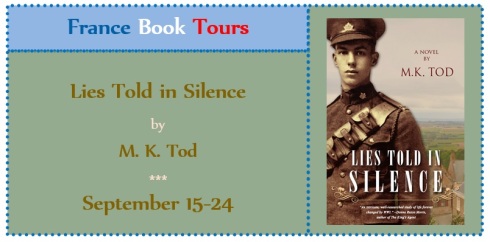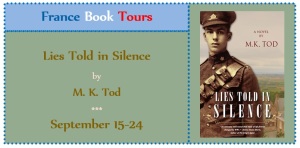Nelson Mandela’s Favorite African Folktales. Foreword by Nelson Mandela. Various authors and illustrators. W. W. Norton, 2002. (also available as an Audiobook)
This review supports the #Diversiverse Challenge (by Aarti Chapati at BookLust) to promote a more diverse universe of reading and reviewing. It is also part of my series on beautiful book illustrations, in story collections for children and adults.
When I first discovered this book, about ten years ago, I was very excited, not only because it is a beautiful book inspired by Nelson Mandela’s love of African folktales, but also because it has a new story about Hlakanyana, a character I had written about in The Fictional 100 (chapter 39). Hlakanyana is a Trickster character who is important in the folktales of the Zulu and Xhosa people of South Africa. Of the 32 stories collected in Mandela’s book, many of them are from the countries of southern Africa, but Nigeria, Morocco, Gabon, Central African Republic, Kenya, Tanzania, and the Congo are also represented with stories. The book opens with a map showing the geographical distribution of the tales.

Nelson Mandela’s Favorite African Folktales, Map by Abdul Amien. (Digital image from Secrets of a Happy Childhood
These stories are brief yet still “rich with the gritty essence of Africa” (as Mandela writes in his Foreword). Many are Trickster tales, irresistible in the ingenious way they both flout and reinforce social customs. There are human tricksters, like Hlakanyana and Sankhambi, and animal tricksters, like Hare, Jackal, and Spider. Some animals are not tricksters at all, but have other recurring symbolic roles (the regal Lion and mysterious Snake are examples).
The history of these tales is long and varied. Every retelling of a folktale is unique–a new story–and Mandela is sensitive to the way these stories have evolved in the minds and words of different storytellers:
Because a story is a story; and you may tell it as your imagination and your being and your environment dictate; and if your story grows wings and becomes the property of others, you may not hold it back. One day it will return to you, enriched by new details and with a new voice.
Many voices are included in this collection (for a total of 19 authors), along with the imaginations of many illustrators (19 artists). One blogger who reviewed this book (Moni Dani, Secrets of a Happy Childhood) noticed that, while all but one of the illustrators are South African, their styles are generally not traditional and exemplify the diversity of modern trends in African art. Thus, Mandela’s collection is an exciting pairing, she finds, of authentic, traditionally told tales with a very contemporary type of visual art. Let’s jump in and look at a few of them!
“The Enchanting Song of the Magical Bird” (recorded over a century ago by Pastor Julius Oelke in Tanganyika–now Tanzania; translated by Darrel Bristow-Bovey) is the book’s first story. It begins, “One day, a strange bird arrived in a small village that nestled among low hills. From that moment on, nothing was safe.” The giant bird swooped in and devoured all the crops in the fields and in the granaries. Even the animals–sheep, goats, and chickens–began to disappear. It hid in an old yellowwood tree when it wasn’t plundering the villagers’ food supply. They decided that the tree must be chopped down, and perhaps then the frightening bird would leave their village. But whenever the men tried to chop the trunk of the tree, they heard “the honey-sweet song” of the bird, and they were transfixed. They couldn’t continue and gave up the attempt. (The description reminded me of Odysseus’ men rapt by the song of the Sirens.) They tried many times, but the entrancing song of the bird or the sight of its beautiful plumage stopped them every time. At last, the headman had the idea to send the village children to do the job, because, “Children hear truly and their eyes are clear.” Amazingly, the children were not swayed by the charms of the bird, and they felled the tree, whose branches crushed the bird and killed it. This haunting story is so different from what I expected–the opposite of the Pied Piper of Hamelin, for example, where the children are led away by the charming Piper’s song. Instead, the children’s innocence allows them to discern the evil hiding under the false appearance, the honey-sweet song and iridescent feathers. And now for its beautiful illustration:
“The Message” (Nama people, Zimbabwe; from Grandma Rachel Eises, as told to George Weideman; translated by Leila Latimer) is a story of miscommunication, teaching how death came into the world. It begins:
This is the story of Full Moon, Tick, and Hare, and the message that Moon sent to the people a long, long time ago.
This was no ordinary message! Indeed, it was a most important message. Because, you see, Moon does not really die. She comes back again, as we see each time at full moon. And Moon wanted the people to know this truth: “Just as I die and come alive again, so you also shall die and live again.”
Moon gave the message to Tick to give to the people in the kraal (an encampment of huts for a clan). First, Tick jumped onto the feathers of a sand grouse who flew away, so Tick did not deliver his joyful news to the people, some of whom were now sick and dying–he could hear their crying by the campfires. Then he jumped into the fur of a gemsbok (a gazelle), but it jumped swiftly away from the kraal. At last, Tick faithfully delivered the message to Hare, but Hare was, well, hare-brained and forgot the message, telling the people instead, “Just as I die and remain dead, so shall you die and perish.” The sickest man in the village died that day. Moon was angry at Hare and threw a piece of burned log at its face; hare threw it back at the face of the moon, which now bears the dusty color of the ashes.
“The Snake Chief” (Zulu; from Miriam Majola, as told to Diana Pitcher) is a beautiful story about the magic flowing from a mother and daughter’s love for each other. It begins: “Nandi was very poor. Her husband was dead and she had no sons to herd cattle and only one daughter to help in the fields.” One day Nandi went as usual to gather berries from the umdoni trees; she sold these berries to get food for herself and her daughter, but this day Snake was there at the tree, eating the berries. Nandi objected that he had stolen her berries and she would have nothing to trade for meat to eat. Snake did not threaten her, but merely struck a bargain. He asked, “What will you give me in exchange for the umdoni berries? If I fill your basket, will you give me your daughter?” Surprisingly, Nandi agreed, thinking she could elude the Snake by taking a circuitous route home. But no!–Snake soon appeared to claim the daughter, as promised. Nandi cried and objected, but her daughter honored her mother’s promise and welcomed the Snake, finding him food and caring for him. In the morning when Nandi woke, she found not Snake but in his place a handsome young man, likely a chief’s son, who would stay with them, herd cattle, and make their lives better as a faithful son-in-law. Love between daughter and mother, and the daughter’s kindness, had undone the enchantment on the young man. This is a beautiful variation of the “animal groom” motif, known worldwide. The French story of “Beauty and the Beast” is another famous example, but in “The Snake Chief” it was the girl’s mother who made the bargain with the beast by taking berries, instead of a father who was caught taking a single red rose. In both stories, family life was reinforced because parental love was transformed into stable marital love and the generations could move on in harmony. I love the sweet illustration for this tale: the Snake coils around the scene of the loving couple like a picture frame, while mother Nandi looks on proudly.
“How Hlakanyana Outwitted the Monster” (Zulu and other Nguni folklore; retold by Jack Cope) is a sequel to the story I retold in my Fictional 100 chapter about his outrageous misdeeds in his village. This story tells another incident after he fled the angry villagers, and begins:
Hlakanyana had left his mother and run away from home because the warriors were hunting for him. He walked along on his journey over the earth, but he had nothing to make music with and nothing happy to sing about. He was very tired and very hungry.
Trickster characters are always ravenously hungry, prey to their own unbridled appetites, and this is exactly what gets them into so much trouble! First, he catches a hare and cooks him, then makes a flute from the hare’s shinbone, because he loves to make up songs. So far, no problem, but strangeness lays ahead for him. He encounters a clay monster on the ground, with grass growing on one side of his body (eek!)–the monster is eating a fresh loaf of bread and Hlakanyana manages to steal it. The monster gets up and chases him into a hole under a tree, but Hlakanyana is clever and tricks the creature into letting go of his leg, making him think it is a tree root he has grasped. The illustration shows that Hlakanyana is no average naughty boy, but a mythic creature himself. To me, this story suggests a lesson about not being rapacious with the Earth, but sometimes letting it rest and keep its fruits, the grain so necessary for bread and for life.
Oh, there are so many stories–about tree wives and wolf queens, and so much more. But I will stop now and just hope you will pick up this book for yourself, or enjoy the all-star Audiobook (described below).
- Hlakanyana ranks 39th on the Fictional 100. On his page you will find some further information about him.
Related links:
- Review of Nelson Mandela’s Favorite African Folktales at Secrets of a Happy Childhood [blog]. With special emphasis on the illustrators (African artists) and styles of illustrations, in relation to traditional African art vs. modern trends.
- Nelson Mandela’s Favorite African Folktales [audiobook], to benefit children orphaned by HIV/AIDS. Tales are read by Alan Rickman, Matt Damon, Vusi Mahlasela, Charlize Theron, LaTanya Jackson, Helen Mirren, Don Cheadle, Hugh Jackman, Blair Underwood.
I’m also counting this book toward my participation in the Travel the World in Books Reading Challenge.





























Recent Comments